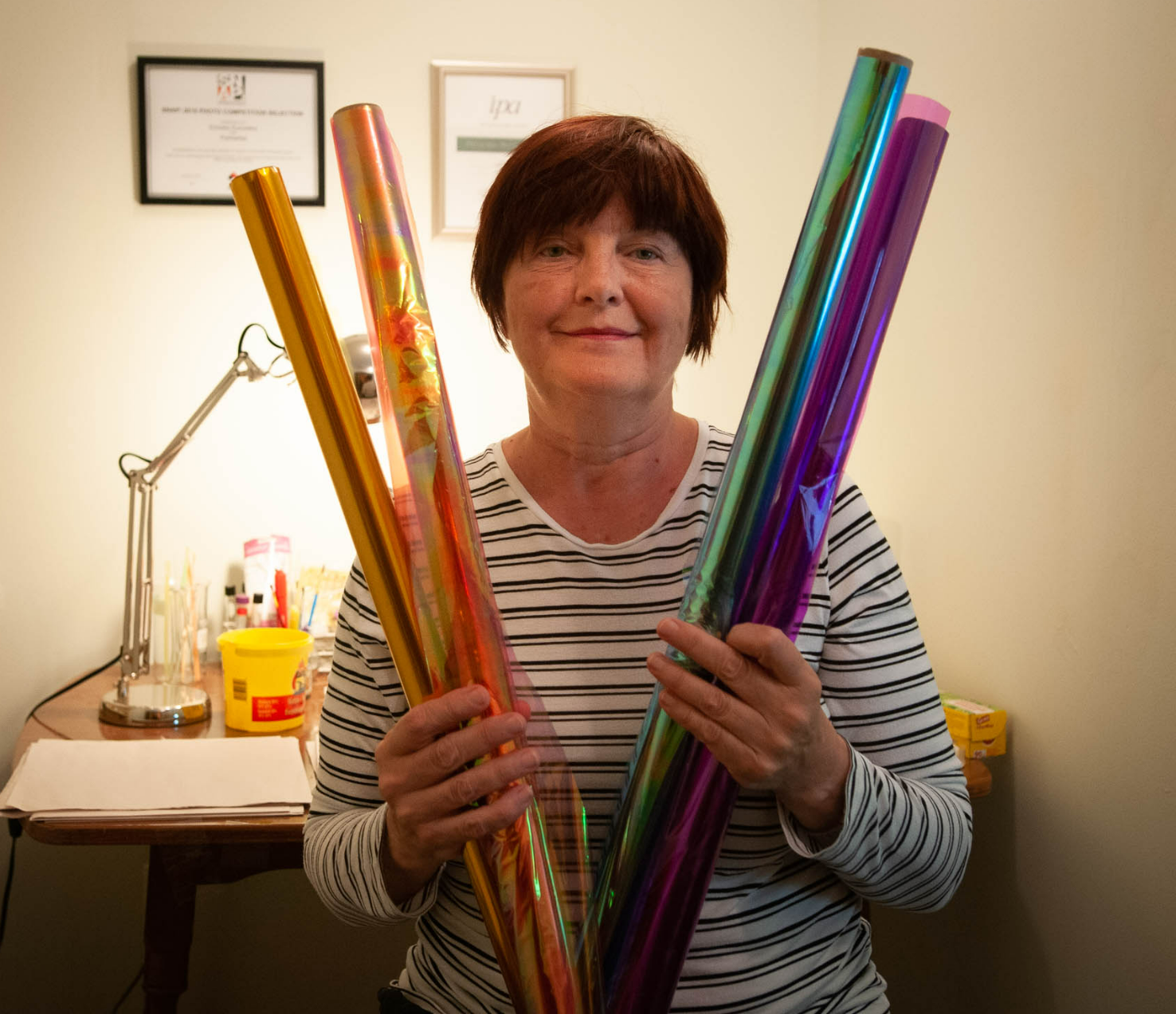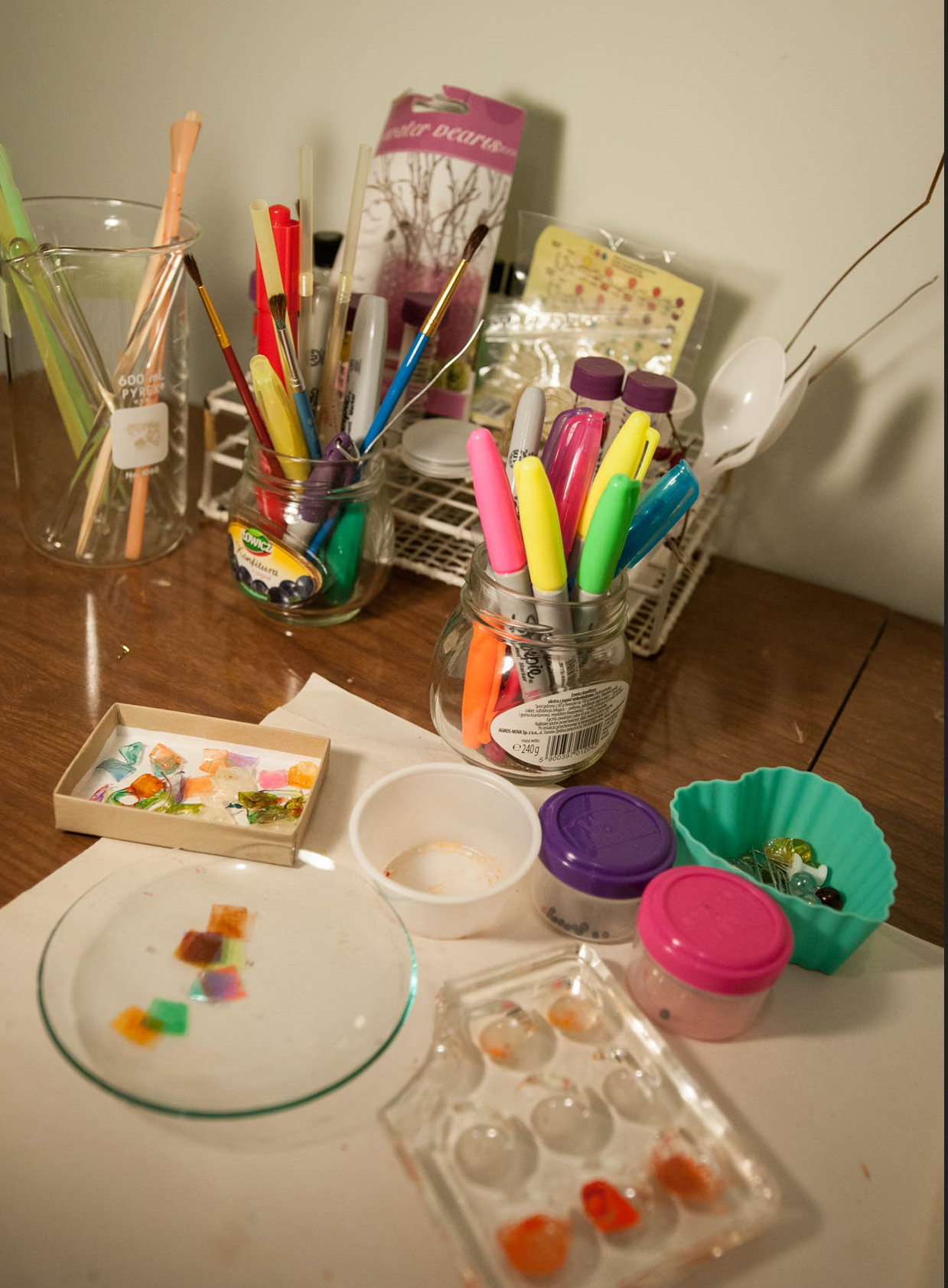Interview with Ela Kurowska

“
Seeing the transformation of ordinary resin objects into abstract, glowing, colorful images inspired me to look at the unexplored potential of photoelastic effect in art photography”
Tell us about how you decided to become an artist
I started photography as a hobby after many years of working as a scientist in the field of biochemistry. As a photographer, I discovered quite early that I can combine my love for capturing the world through the lens with my lifelong passion for science and experimenting.
Nine years ago, I became interested in photoelasticity, a long abandoned experimental technique used by engineers to visualize the distribution of stress in models made of transparent resins subjected to deformation and viewed in the cross-polarized light. The Eureka moment came when I discovered that I could replace hard resins with organic gels which had similar optical properties but were soft, malleable, and easy to deform. In addition, these organic gels naturally formed graceful, biomorphic shapes resembling living organisms made of light and emerging from the darkness – therefore I called them Light Forms.
I still remember my first experience with organic gels. When I looked at that first gel composition through the camera lens with a polarizer filter, I saw an alien planet full of colors and rich textures, glowing with inner light and emerging from dark space. That image defined my whole subsequent career as an artist.
What influences you the most when you are in the process of creating new artwork?
In my artwork, I explore the theme that always fascinated me as a scientist: the origins of life. I try to visualize the potential of amorphous organic matter to transform into images of otherworldly life made of light and vivid colors.
Another important part of my creative process is an attempt to capture the universal essence of life, its gracefulness, harmony, its magical spark recognizable even in alien forms, its unpredictability, and its breathtaking beauty.
Gallis, 2022
There is also an element of playfulness in my work. I tint the gels with bright, vivid colors and I constantly invent new science-based tricks to alter properties of gel materials, or to mold solidified gels into interesting shapes and patterns. In almost every photographic session I experiment with another technique.
Are there particular artists, scientists, or ideas that HAVE INSPIRED and influenced you?
From the moment when I started to work with organic gels, I realized that I just entered strange new worlds where no photographer has gone before. So, I wouldn’t say that I was influenced by other photographers. I had lots of experience in taking “regular” pictures, but I had to learn how to make strong abstract compositions that evoke emotions, and I needed to develop a different set of skills to capture the ephemeral beauty of my gel objects. I was lucky to meet a person with arts background who found my early works fascinating and who encouraged me to build up a larger portfolio. He agreed to give me some feedback, and I spent several months creating new artwork and analyzing his comments and critiques. I also became a frequent visitor in contemporary art galleries, and I ended up joining a local art collective of abstract painters. Being the only photographer in that group, I have discovered that I have more in common with them than with other photographers.
Of course, my artwork is also inspired by science. I love experimental photography, especially the kind that captures the beauty of natural phenomena using unconventional techniques like very short or very long exposures, special filters, or unusual lighting. My favorite contemporary science photographer is Fabian Oefner, whose images transform simple experiments into stunning abstract art.
Tineasia 03, 2022
You have a background as a Biochemist, tell us about how you combine and balance scientific and artistic processes to create your artworks.
My creative process is a combination of science and art photography. As a scientist, I design and build my miniature gel structures, manipulate them to develop internal tension in the gel material, and view them in the cross-polarized light. Then, as a photographer, I stage and compose my objects, by adjusting illumination and camera angle, and sometimes by rearranging different parts, or superimposing small organic objects. The final image is a result of collaboration with forces of nature that bend and stretch gel material in delightfully unpredictable ways. The moment when pale, inanimate organic forms transform into spectacular, glowing structures which look alive happens only
with a perfect combination of stress patterns in the gel material, illumination, and camera angle. For me, recognizing and capturing this moment is a breathtaking experience, like nature’s offering of an unexpected gift of beauty. It feels like creating new life!
Hortia, 2020
Is there something in particular you would like viewers to come away with or impact that you aim to engender?
I hope my viewers will be attracted to the graceful harmony of my works, to the mysterious light emitted by biomorphic forms, to their vivid colors, perceived vitality, and unique beauty. The images which I create are purposefully removed from the context of scale, so perhaps they could represent privileged snapshots of alien life developed in some remote corner of the Universe.
I am also happy when people just see various familiar shapes or creatures in my artworks. I encourage those free interpretations by giving my images playful titles that mimic Latin names.
Do you have a dream project? What might that be?
In my ideal world, Light Forms photography will gain recognition as a novel, creative project at the interface between art and science. When I submit my images to major international photography competitions, I always have difficulty with assigning them to one specific category, perhaps because such a category does not exist. I would love my artwork to be validated by a major artistic institution and be displayed in a very large scale.











